Prices in AUD. Shipping worldwide. Flat rate $8 postage per order within Australia. International by weight calculated at checkout. Read full terms.
-


Grzyby (Fungi)
AU$200.00 Read MoreAdd to cartAlina Skirgiello
Warszawa: Panstwow Wydawnictwo Naukow, 1960.The mushroom volume from the Flora Polska.
-
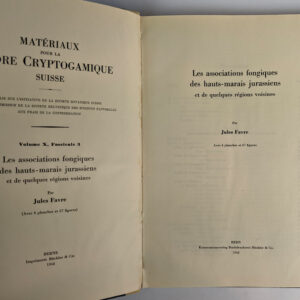
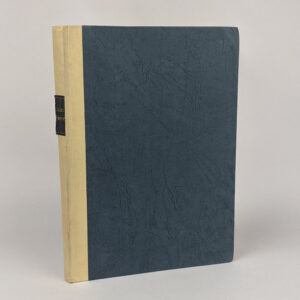
Les Associations Fongiques des Hauts-Marais Jurassiens et de Quelques Regions Voisines
AU$40.00 Read MoreAdd to cartJules Favre
Liestal: Druck Ludin, 1960.The Fungal Associations of the Hauts-Marais Jurassiens and some neighboring regions. Volume X, Fasciule 3 of Materiaux pour la Flore Cryptogamique Suisse.
-

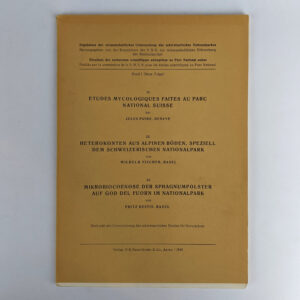
Etudes Mycologiques Faites au Parc National Suisse; Heterokonten aus Alpinen Boden, Speziell dem Schweizerischen Nationalpark; Mikrobiocoenose der Sphagnumpolster auf God del Fuorn im Nationalpark
AU$80.00 Read MoreAdd to cartJules Favre; Wilhelm Vischer; Fritz Heinis
Aarau: H. R. Sauerlander 7 Co., 1945.3 papers from the Results of the Scientific Investigation of the Swiss National Park: 11. Mycological Studies Made in the Swiss National Park by Jules Favre, with 2 colour plates; 12. Heterokonten from Alpine soil, specifically the Swiss National Park by Wilhelm Vischer; 13. Microbiocoenosis of the sphagnum pads on God del Fuorn in the National Park by Fritz Heinis. Printed with the support of the Swiss Federation for Nature Conservation.
-

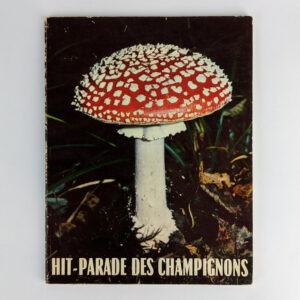
Hit-Parade des Champignons: Champignons Sauvages, Champignons & Nature
AU$55.00 Read MoreAdd to cartSerge Hureaux
Paris: Iris, 1974.French guide to wild mushrooms.
-

What We Get From Trees
AU$10.00 Read MoreAdd to cartU. S. Department of Agriculture Forest Service
: Forest Service, US Department of Agriculture, 1945.Large folding information poster published by the United States Department of Agriculture Forest Service about the industrial uses of trees.
-
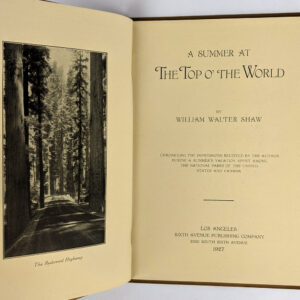
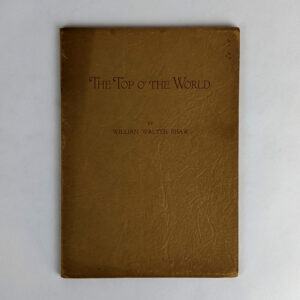
A Summer at the Top o’ the World
AU$200.00 Read MoreAdd to cartWilliam Walter Shaw
Los Angeles: Sixth Avenue Publishing Company, 1927.Chronicling the impressions received by the author during a summer’s vacation spent among the National Parks of the United States and Canada. Locations visited included the Carquinez Strait, the Redwood Highway, Portland, Columbia River Highway, Yellowstone National Park and its geysers, Jackson Hole country including a rodeo there, Buffalo Bill Country, Glacier National Park, Turtle Mountain, the Banff-Windermere Highway and the Okanagan Valley.
-
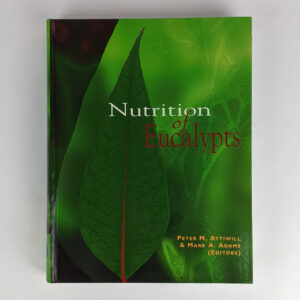
Nutrition of Eucalypts
AU$100.00 Read MoreAdd to cartPeter M. Attiwill; Mark A. Adams
Melbourne: CSIRO Publishing, 1996. -

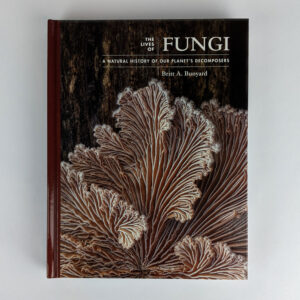
The Lives of Fungi: A Natural History of our Planet’s Decomposers
AU$50.00 Read MoreAdd to cartBritt A. Bunyard
Princeton: Princeton University Press, 2022.“A fascinating and richly illustrated exploration of the natural history of fungi. We know fungi are important, for us as well as the environment. But how they live, and what they can do, remains mysterious and surprising. Filled with stunning photographs, The Lives of Fungi presents an inside look into their hidden and extraordinary world. The wonders of fungi are myriad: a mushroom poking up through leaf litter literally overnight, or the sensational hit of umami from truffle shavings. Alexander Fleming cured infections with mold and spiritual guides have long used psychedelic mushrooms to enhance understanding. Then there are the tiny threads of fungi, called hyphae, that create a communications network for the natural world while decomposing organic matter. Combining engaging and accessible text with beautiful images, The Lives of Fungi lays out all the essential facts about fungi for the mycologically curious.” (publisher’s blurb)
-
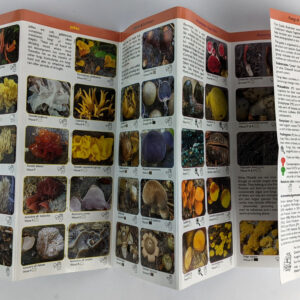
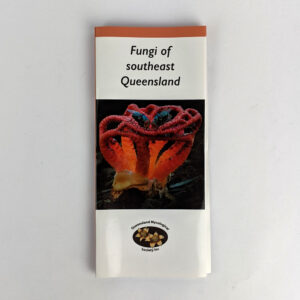
Fungi of Southeast Queensland
AU$6.00 Read MoreAdd to cartFrances Guard; Sapphire McMullan-Fisher
Caloundra: Queensland Mycological Society, 2021.This laminated fold-out field guide illustrates some of the variety of fungi that are not typical ‘mushroom’ shapes. This is an updated version of Fungi of the Sunshine Coast
-
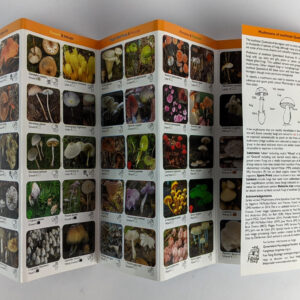
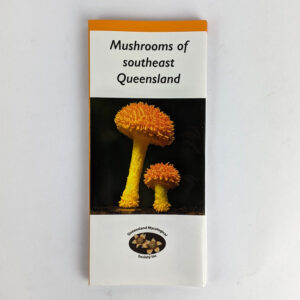
Mushrooms of Southeast Queensland
AU$6.00 Read MoreAdd to cartFrances Guard; Sapphire McMullan-Fisher
Caloundra: Queensland Mycological Society, 2021.This laminated fold-out field guide illustrates 97 ‘mushrooms’ i.e. fleshy fungi with cap, stem and gills, pores or spines, and some fan-shaped gilled fungi. This is an updated version of Mushrooms of the Sunshine Coast.
-
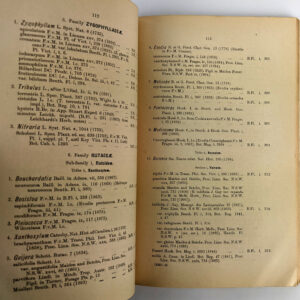
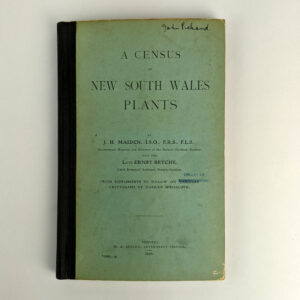
A Census of New South Wales Plants
AU$100.00 Read MoreAdd to cartJ. H. Maiden; Ernst Betche
Sydney: W. A. Gullick, Government Printer, 1916.A talented and enthusiastic botanist Joseph Henry Maiden established the colony’s first herbarium, the National Herbarium of New South Wales, together with a museum and library. Among his many studies and achievements he was also responsible for the construction of Sydney’s first playground and worked tirelessly to develop the educational value of the Botanical Gardens for all Australians.
-

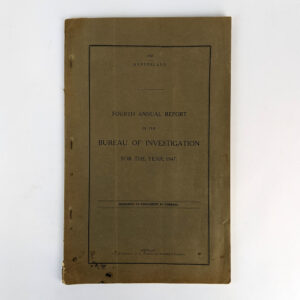
Fourth Annual Report of the Bureau of Investigation Under The Land and Water Resources Development Acts, 1943 to 1946 (for the Year 1947)
AU$80.00 Read MoreAdd to cartJ. R. Kemp
Brisbane: A. H. Tucker, Government Printer, 1948.Results of surveys and investigations of land and water resources in Queensland. Illustrated throughout with photographs and maps.
-
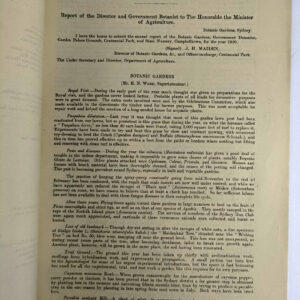
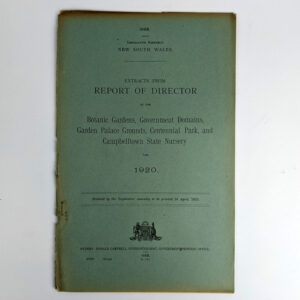
Extracts from Report of Director of the Botanic Gardens, Government Domains, Garden Palace Grounds, Centennial Park, and Cambelltown State Nursery for 1920
AU$150.00 Read MoreAdd to cartJ. H. Maiden
Sydney: Donald Campbell, Government Printer, 1922.NSW Government Report by Joseph Henry Maiden. Appointed Government Botanist and Director of the Botanic Gardens in 1896 and from that date produced voluminous reports most years throughout his tenure. A talented and enthusiastic botanist Maiden immediately set to work establishing the colony’s first herbarium, the National Herbarium of New South Wales, together with a museum and library. He was also responsible for the construction of Sydney’s first playground and worked tirelessly to develop the educational value of the Botanical Gardens for all Australians. His reports provide detailed insight into such endeavours, as well as the year on year goings on of the gardens in the late 19th and early 20th century, with its developments and challenges, from the growth and maintenance of the grounds, to projects, staff, botanical samples and seed exchanges, botanical and library acquisitions, and more. This extract provides a glimpse into the gardens in 1920 and includes 8 large photographs of trees.
-
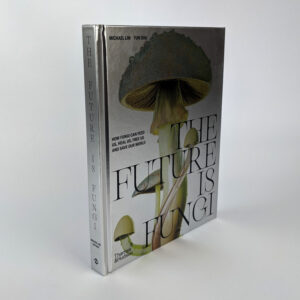

The Future is Fungi
AU$50.00 Read MoreAdd to cartMichael Lim; Yun Shu
London: Thames & Hudson, 2022.How Fungi Can Feed Us, Heal Us, Free Us and Save Our World. “The kingdom of fungi has survived all five major extinction events. They are the architects of the natural world, integral to all life. They sustain critical ecosystems, recycling nutrients and connecting plants across vast areas, and help to produce many staples of modern life, such as wine, chocolate, bread, detergent and penicillin. Today, in the face of urgent ecological, societal and spiritual crises, fungi are being engineered to grow meat alternatives, create new sources of medicine, produce sustainable biomaterials, remediate the environment and even expand our collective consciousness. The Future is Fungi is a complete introduction to this hidden kingdom. Exploring their past, present and potential future impact in four key areas – food, medicine, psychedelics and mental health, and environmental remediation – this book not only reveals how fungi have formed the foundations of modern life but how they might help shape our future. Rich with informative texts, awe-inspiring 3D digital art and tips on how to immerse yourself in the world of fungi, this is a manifesto for the future, an invitation into a deeper awareness of our relationship with the natural world, each other, and ourselves.” (publisher’s blurb)
-
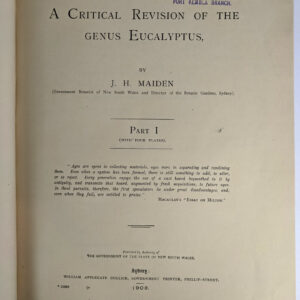
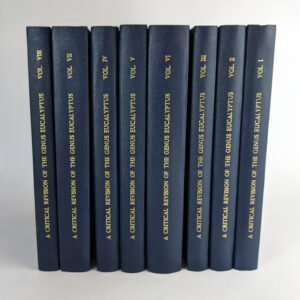
A Critical Revision of the Genus Eucalyptus (75 Parts in 8 Volumes)
AU$4,500.00 Read MoreAdd to cartJ. H. Maiden; Margaret Flockton
Sydney: William Applegate Gullick, John Spence, and Adam James Kent, Government Printers, 1903-1931.A complete set, being 75 parts in 8 volumes, containing over 3000 pages and 304 plates, 12 of which are in colour, and 4 of which are maps, of Joseph Henry Maiden’s masterpiece in the field of botanical research, and his major taxonomical work alongside his Forest Flora of New South Wales. The set is illustrated chiefly with lithographs by Margaret Flockton, together with several by Matilda Smith, a facsimile of L’Heritier, and 4 maps, as well as a photographic illustration by L. C. Webster, and a photographic portrait of Maiden in one of the posthumous volumes therein also published an obituary by Richard Hind Cambage. The project, which took 28 years to be published, the final parts prepared by Maiden before his death in 1925 and published posthumously edited by Cambage and William Blakely, was an extension of the work started by Ferdinand von Mueller and George Bentham in Flora Australiensis and continued by Mueller in his Eucalyptographia, devising classifications based on the characteristics of the stamens, and remained an important reference for many years. Maiden’s study of eucalyptus was completed alongside his duties as Government Botanist and Director of the Botanic Gardens, which he commenced in 1896. A talented and enthusiastic botanist Maiden established the colony’s first herbarium, the National Herbarium of New South Wales, together with a museum and library. Among his many studies and achievements he was also responsible for the construction of Sydney’s first playground and worked tirelessly to develop the educational value of the Botanical Gardens for all Australians.
-
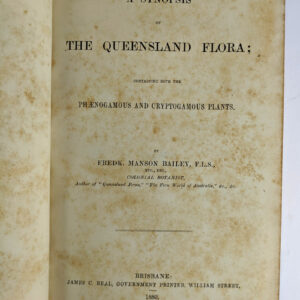
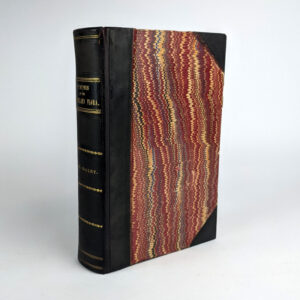
A Synopsis of the Queensland Flora; Containing both the Phaenogamous and Cryptogamous Plants
AU$300.00 Read MoreAdd to cartFredk. Manson Bailey
Brisbane: James C. Beal, Government Printer, 1883.A thorough catalogue of short descriptions for the identification of plants found in the colony of Queensland. FERGUSON 6498a.
-
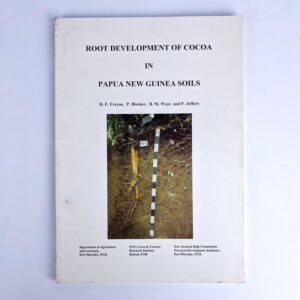
Root Development of Cocoa in Papua New Guinea Soils
AU$80.00 Read MoreAdd to cartD. F. Freyne; P. Bleeker; B. M. Wayi; P. Jeffery
Brisbane: Freyne Consulting, 1996.Technical report of research by the Land Utilisation Section, Department of Agriculture and Livestock. Write up commissioned by the Governments of Papua New Guinea and New Zealand. Scarce, 2 copies in OCLC at July, 2021, at the University of Adelaide and Wageningen University, Netherlands.
-
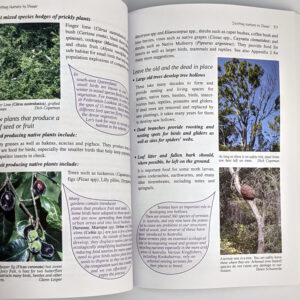

Inviting Nature to Dinner
AU$32.00 Read MoreAdd to cartHelen Schwencke; Dick Copeman
Brisbane: Earthling Enterprises, 2020.“Nature is at a crisis point. The living creatures with whom we share the planet are being decimated by our actions. We are clearing their habitat, changing the climate, poisoning them with chemicals and moving them around the globe so that some become invasive species that threaten others. We may feel powerless to challenge these global trends, but we are not. This book shows how, by starting in our own gardens, we can begin to make a difference, amply demonstrated by Helen’s 33-year-old butterfly and wildlife garden.” (publisher’s blurb)
-
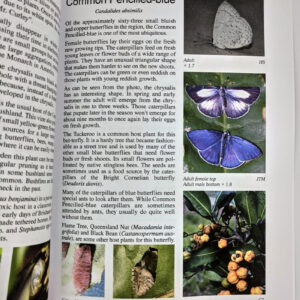
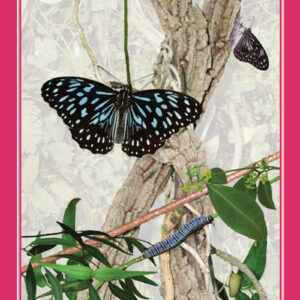
Create More Butterflies: A guide to 48 butterflies and their hostplants for south-east Queensland and northern New South Wales
AU$34.00 Read MoreAdd to cartFrank Jordan; Helen Schwencke
Brisbane: Earthling Enterprises, 2005.“With over 250 photos for 48 different butterfly life cycles and caterpillar food plants, the 88 pages of Create More Butterflies covers species from south-east Queensland and northern New South Wales and well beyond. 31 of the 48 species were raised from eggs laid on host plants grown in a 16 perch (405 sq m) inner Brisbane suburban garden.” (publisher’s blurb)
-
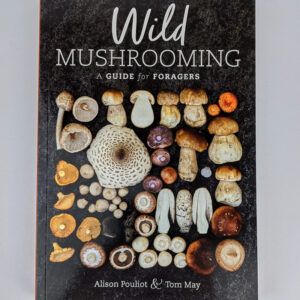
Wild Mushrooming: A Guide for Foragers
AU$50.00 Read MoreAdd to cartAlison Pouliot; Tom May
Melbourne: CSIRO Publishing, 2021.“Fungi are diverse, delicious and sometimes deadly. With interest in foraging for wild food on the rise, learning to accurately identify fungi reduces both poisoning risk to humans and harm to the environment. This extensively illustrated guide takes a ‘slow mushrooming’ approach — providing the information to correctly identify a few edible species thoroughly, rather than many superficially. Wild Mushrooming: A Guide for Foragers melds scientific and cultural knowledge with stunning photography to present a new way of looking at fungi.” (publisher’s blurb)
